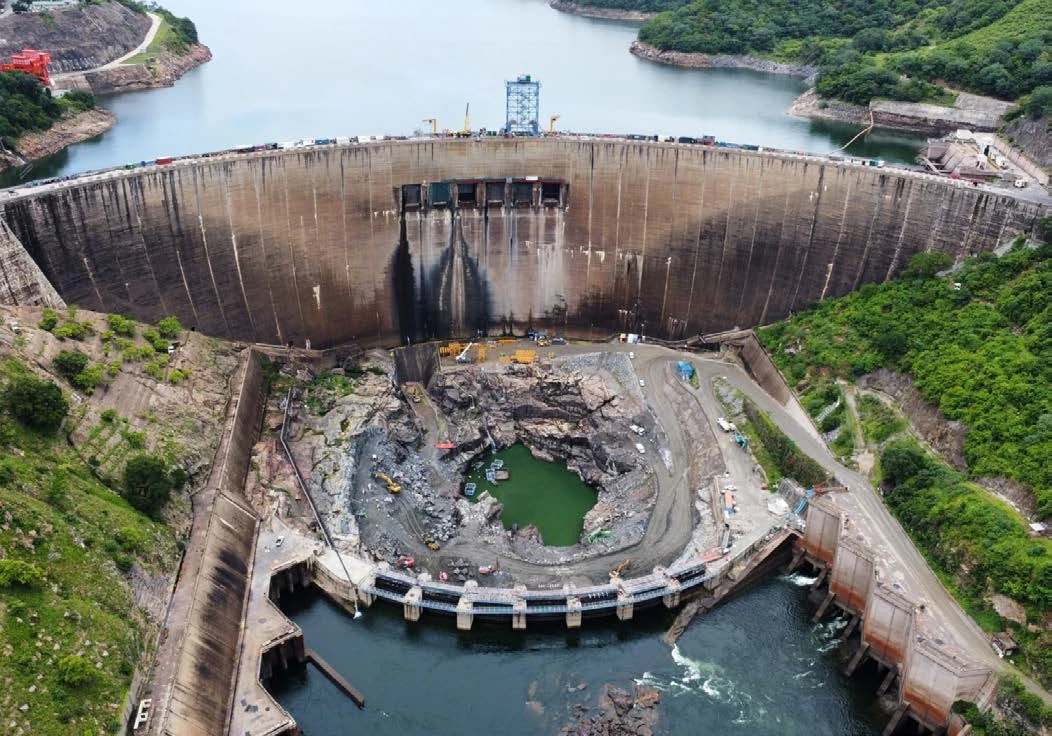Built-in the 1950s and put into service in 1960, the Kariba Dam wall responsible for controlling the water level in the dam faced danger from swirling water that increased after the discovery of scouring and erosion along the weak fault zone near the dam’s foundations.
An 80-meter-long plunge pool was created by digging and spilling water, and concrete was used to reinforce the bedrock that had been weakened by the water.
The Kariba Dam Rehabilitation Project (KDRP), with a total cost of US$294 million, is designed to restore the infrastructure of the dam. The plunge pool will be reshaped, making it more resistant to erosion and scouring of the dam wall.
Additionally, the spillway gates will be fixed to ensure that they operate properly and do not jam, thus avoiding potential dam failure and the resulting potential loss of life, properties, and electricity. The rehabilitation project seeks to enhance the safety of the dam and address the damage done to the plunge pool by spilling water over the years.

For over six decades, Zambia and Zimbabwe have shared ownership of the Kariba Dam, which is overseen by the Zambezi River Authority. This has enabled the countries to benefit from the generation of electricity from the dam.
Zimbabwe has a 1,050-megawatt hydroelectric power plant located at Lake Kariba.
Significant progress has been on the plunge pool project and successful collaboration and coordination has resulted in the completion of 80% of it.
Zimbabwe and Zambia have both pledged to do their utmost to ensure the successful execution of this vital endeavour, as it will provide accessible, inexpensive, and green energy to the region.
The KDRP will help Zimbabwe and Zambia achieve energy security and economic growth, in line with the goals outlined in their national energy policies and development plans.
The project is expected to restore the dam to internationally acceptable operational standards, facilitating the sustained generation of electricity. When completed, the rehabilitation project will increase the dam’s lifespan from 50 to 100 years and benefit three million people through risk reduction and mitigation, while assisting in sustaining power generation estimated at 10 gigawatts annually.
The dam provides at least 2000 megawatts of clean electricity power generation to Zimbabwe and Zambia which is the major benefit of the dam and, is also a source of livelihood to many families through fishing and tourism.
The KDRP is being financed by the European Union, the Zambezi River Authority, the World Bank, the African Development Bank, and the Swedish International Development Cooperation.

